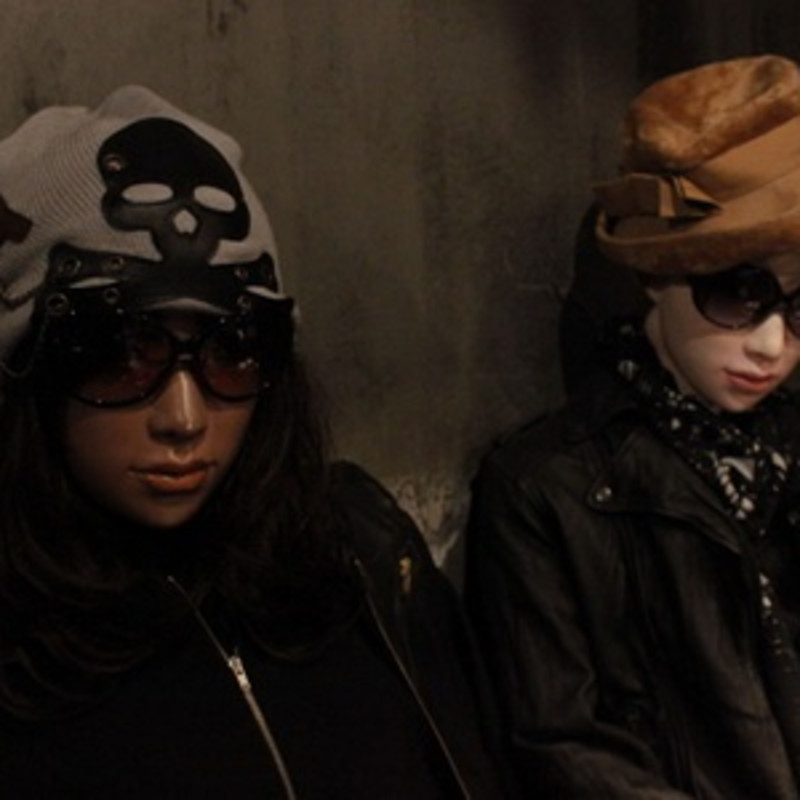Lili looks like any number of young women one might see on the streets of a major Chinese city. She is dressed with a certain style, but reveals no trace of wealth or special quality. She is emphatically unexceptional. She has not, as yet, acquired true star status, but that may be simply a matter of time. She may have ambitions. Her clothes, her hair and her attachments have been chosen to convey the utmost ordinariness. If she is erotic, it is not because of any disclosure on her part like a hint beyond the usual of breast or thigh or of what she is wearing closest to the skin, but because she is a feminine presence. Her ordinariness ensures her emptiness. She is whatever you want her to be. She is the mirror of your projections – a most agreeable companion. She is a creation. She has been conjured into existence by Tim Yip. She has emerged from his studio where she resides in several forms.
Tim Yip is most celebrated as a designer for film and stage, but he was a photographer at the outset. Taking photographs is as natural for him as walking or breathing. It is part of the rhythm of his daily life. Much of his conscious time is experienced looking through a viewfinder. We are all inhabitants of a cinematic and photographic era. The photographic view, defined by a rectangle, provides us with an alternative narrative in which the world we occupy can become an extension of our memory. The view grants us a sense of another time or place. It even prompts the recollection a film we once saw or of a photograph that is impossible to forget. The photographic frame provides us with a parallel world. We can escape into it in order to survive the pressures of the daily round. We all slide between physical and imaginary worlds. Lili hovers at a point between the two. She inhabits a gap between the measurable world and the world of our imagination and memory.She is a creation from Tim’s memory and a physical presence on a seat in his studio – a constant, unmoving companion. She exists somewhere between the animate and the inanimate.
Tim Yip began to photograph her. She accompanied him on a plane to Taipei. She took up residence in an apartment. She was seen at the wheel of a car. She could easily become the subject of an advertising campaign. Some of the pictures of her could have been shot by paparazzi. She could start to appear at film premieres as some comment on the artifice of celebrity, but she offers a more subtle provocation.
For many years it was believed that photographs revealed evidence of a real world. They were thought to offer some kind of truth. Now we can see them all as a fiction. They offer the most selective history. The supposed reality the photograph presents is derived from only a fraction of a second, maybe a thousandth of a second, and then it is lodged in our imaginations or enters the history of the medium and takes on a resonance that is timeless. The narrative of Lili’s life can be followed through the sequence of these photographs. The photographs grant her existence. She hides behind her glasses so we never or rarely see her eyes. We imagine them, just as we imagine her mood. We can project on to her face anything we wish. The photographs suspend her in the timeless zone.
The whole exercise of Lili’s life is an exploration of memory. Tim Yip has been probing unconsciously into his memory. Lili has emerged from the exploration. Memory above all else preserves our own history. It is at the root of our imaginative and creative drives.We have to protect it and nurture it all the more in a rapidly transformed world, where the virtual supplants the physical in so many areas of our lives. Lili is a ghost. She is in the seat beside you, riding with you wordlessly. The photographs are the only evidence of her passage or of the suggestion that she was ever here.
